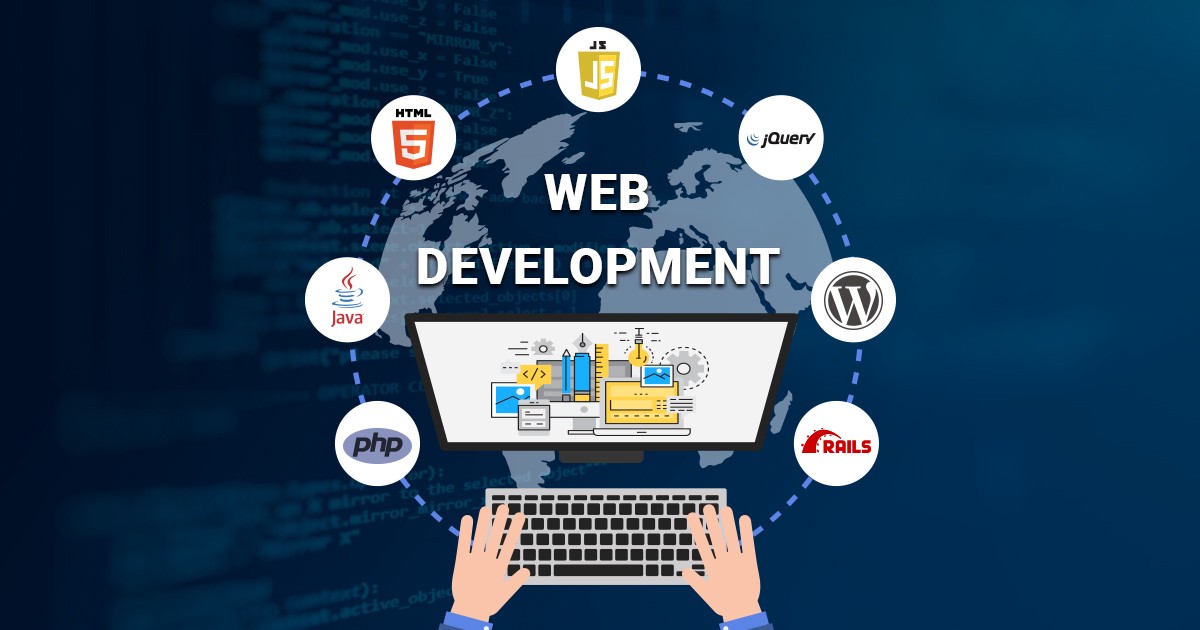The Evolution of Web Development
In the early days of the internet, web development was relatively simple. Websites consisted mainly of static HTML pages, often just text and images, with little to no interactivity. As the internet grew in popularity, the need for more dynamic and engaging websites became clear. This led to the development of technologies like CSS (Cascading Style Sheets) for styling web pages and JavaScript for adding interactivity and functionality.
The early 2000s saw a major shift in web development with the advent of web applications. Web developers began creating websites that could interact with users in real time, storing and retrieving data from servers to create personalized experiences. The emergence of content management systems (CMS) like WordPress and Joomla made it easier for non-technical users to build and maintain websites, further fueling the growth of the web development industry.
Today, web development encompasses a wide range of technologies, from front-end and back-end development to full-stack development. The rise of mobile devices and responsive web design has led to an emphasis on making websites accessible on any device, while advancements in cloud computing and serverless architectures have made web applications more scalable and efficient.
Front-End vs. Back-End Development
Web development can broadly be divided into two main categories: front-end development and back-end development.
1. Front-End Development: This refers to the part of web development that deals with what users see and interact with. Front-end developers focus on building the layout, design, and user experience (UX) of a website. They use languages like HTML, CSS, and JavaScript to create visually appealing and interactive elements. Frameworks such as React, Angular, and Vue.js have become popular tools for front-end development, enabling developers to build complex, dynamic user interfaces more efficiently.
The primary goal of front-end development is to ensure that users have an enjoyable and intuitive experience when visiting a website. This includes optimizing load times, ensuring mobile responsiveness, and making sure the website functions properly across different browsers.
2. Back-End Development: While the front-end focuses on the client side, back-end development handles the server side of a web application. Back-end developers are responsible for creating the logic that drives a website, including how data is stored, retrieved, and processed. They work with server-side languages like Python, Ruby, PHP, Java, and Node.js, along with databases such as MySQL, PostgreSQL, and MongoDB.
Back-end development also involves server configuration, security measures, and ensuring that data is exchanged securely between the server and the client. A well-built back-end allows websites and web applications to be fast, reliable, and secure.
Full-Stack Development: Bridging the Gap
Full-stack development refers to the practice of working with both the front-end and back-end components of a web application. A full-stack developer has the ability to work on every layer of a website, from the user interface to the server-side logic. Full-stack developers are highly versatile and can create complete web applications from start to finish, making them valuable assets in the development process.
The rise of JavaScript frameworks like Node.js has made full-stack development more accessible, as developers can use the same language (JavaScript) for both front-end and back-end development. This has streamlined the development process and reduced the learning curve for developers working on both sides of the stack.
Web Development Frameworks and Tools
Web development frameworks are collections of pre-written code that help developers build websites and web applications more efficiently. These frameworks provide a structure for organizing code and include pre-built components and libraries for common tasks, such as handling user authentication or interacting with a database.
Some popular front-end frameworks include:
React: A JavaScript library for building user interfaces, particularly for single-page applications.
Angular: A comprehensive framework for building dynamic web applications, developed by Google.
Vue.js: A progressive JavaScript framework used for building modern user interfaces.
For back-end development, popular frameworks include:
Django: A high-level Python web framework that encourages rapid development and clean, pragmatic design.
Ruby on Rails: A full-stack web application framework written in Ruby, known for its simplicity and developer-friendly conventions.
Express.js: A minimal and flexible Node.js web application framework used to build robust APIs and web applications.
In addition to frameworks, developers use a wide range of tools for tasks like version control (Git), project management (Jira, Trello), and testing (Jest, Mocha). These tools help streamline the development process, improve collaboration, and ensure high-quality code.
Challenges and Future of Web Development
While web development offers exciting opportunities, it also comes with its fair share of challenges. Developers must constantly stay updated with the latest technologies, frameworks, and best practices. The rapid pace of innovation means that skills learned today may become obsolete tomorrow. Additionally, security concerns such as data breaches, hacking, and privacy issues require developers to be vigilant in safeguarding their websites and applications.
The future of web development looks promising, with emerging technologies like Progressive Web Apps (PWAs), WebAssembly, and Artificial Intelligence (AI) offering new possibilities for creating faster, more engaging, and intelligent web experiences. As the demand for web applications continues to grow, developers will need to embrace new tools and techniques to stay ahead of the curve.
Conclusion
Web development is an essential and ever-evolving field that plays a crucial role in shaping the digital experiences of today and tomorrow. From the simplicity of static HTML pages to the complexity of modern web applications, the field continues to grow and diversify. As the internet becomes an increasingly integral part of our daily lives, web developers will continue to drive innovation, making the web a more dynamic, interactive, and accessible space for everyone. Whether you are a front-end, back-end, or full-stack developer, the world of web development offers endless opportunities to create, learn, and grow.



Post a Comment
0Comments